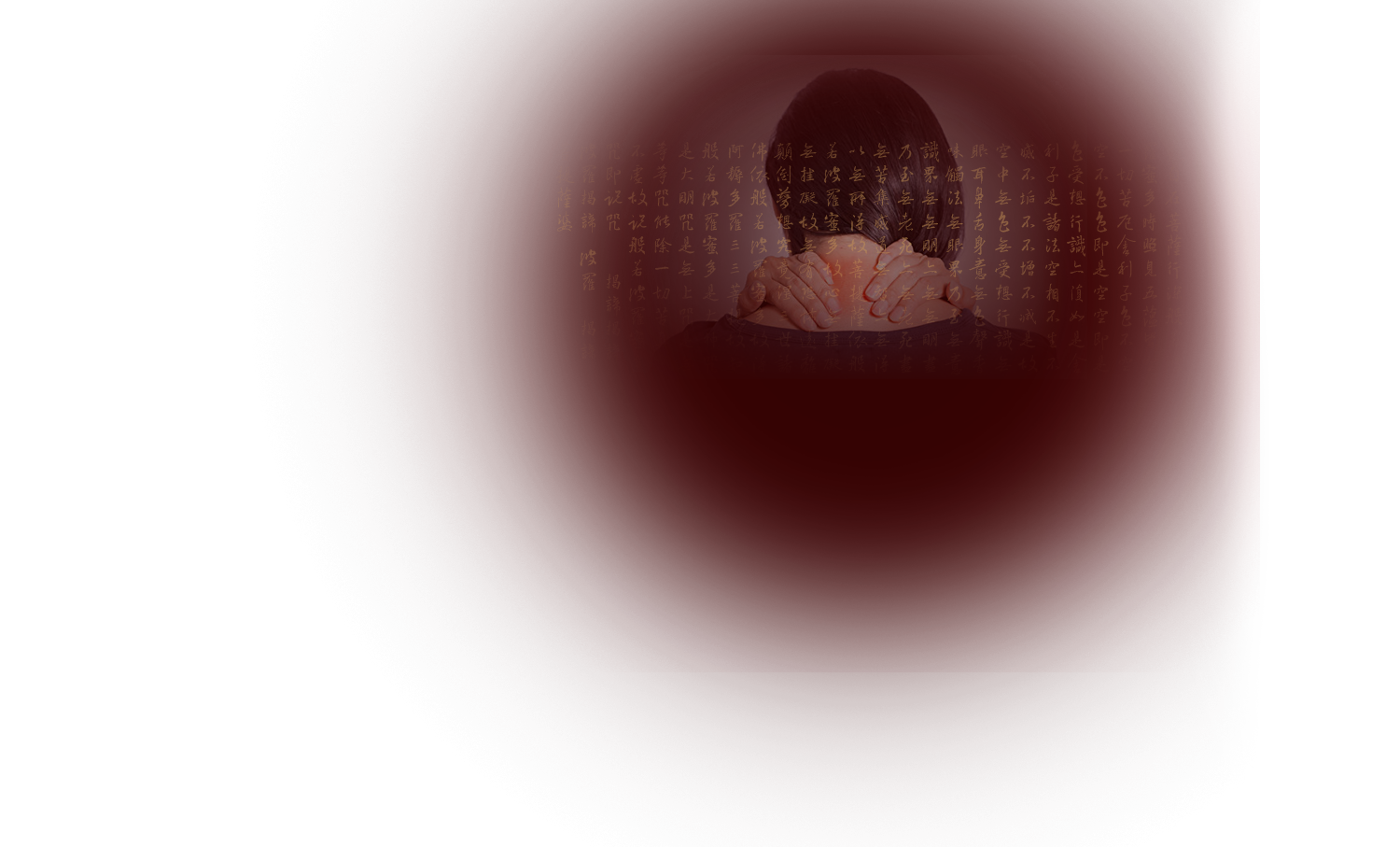
Pain in Different Parts of the Body (by Ling Zhang, RN (US), L.Ac.)

Neck Pain can be caused by muscle strain (excessive cervical fore rake due to prolonged head down work and computer phone use); Arthritis (Inflammation of one or multiple joints, causing pain and stiffness that can worsen with age); Degenerative disc disease (Osteoarthritis of the cervical disc); Radiculopathy (A pinched or irritated nerve in the neck causing pain, numbness, or weakness radiating into the chest or arm); Whiplash (A neck injury that can occur when the head suddenly moves backward and then forward). Acupuncture points are mainly on the neck, and Luo Zheng point, SJ6, SI3, LI4 also work effectively for neck pain. Acupressure is often used for easing the pain and relaxing the muscle, but we will be carefully applying the massage for patients with herniated discs on the neck area.[Read More...]
Shoulder Pain can be caused by: Arthritis(inflammation of the shoulder joint); Rotator cuff tendonitis (tendons in the rotator cuff become irritated or damaged) and bursitis(cushion between the bones and the tendons become swollen or irritated); Rotator cuff tears (aching or throbbing discomfort that can interrupt sleep); Frozen shoulder (progressive pain with stiffness); Calcific tendonitis(calcium deposits build up in the muscles or tendons); Spinal issues (when cervical spine and disc issues are the root cause of shoulder pain). Acupuncture points which are chosen from local shoulder areas like LI15, SJ14, SI9, and LI14 are combined with distal point ST38 work effectively for the shoulder pain. Sometimes we add electric stimulation or moxibustion to the acupuncture points to have better results. If shoulder pain is related to cervical spondylosis, we will increase the corresponding cervical acupoints for acupuncture and massage to achieve better curative effect.[Read More...]
Elbow Pain can come from Golfer's elbow (a condition that causes pain on the inner side of the elbow); Tennis elbow (occurs on the outside of the elbow and sometimes in the forearm and wrist); Muscle strain; Bursitis (inflammation of the fluid-filled pads that act as cushions at the elbow joint), Osteoarthritis (flexible tissue at the ends of elbow bones wears down). Acupuncture points are mostly used around the elbow such as LI11, LI10, LU5 and some Arshi points. We normally also add acupressure to ease the pain and relax the muscles.[Read More...]
Wrist Pain is common in people who repeatedly cause their wrists to strain. Also, wrist pain can be caused by carpal tunnel syndrome (numbness and tingling in the hand and arm caused by a pinched nerve in the wrist); Arthritis (inflammation of the wrist joint); Tendinitis of the wrist.
Finger Joint Pain is mostly from Arthritis (inflammation of one or more finger joints); Osteoarthritis (wearing down of the protective tissue at the ends of bones); Rheumatoid arthritis (body immune system attacks its own joints causing chronic inflammatory disorder of the joints). Acupuncture applied to the local wrist and finger area can address the inflammatory effects, improving motion of the wrist and hand also decreasing pain. In addition, acupuncture can be used to retrain muscle coordination, alleviating the initial mechanical cause of the inflammation. [Read More...]
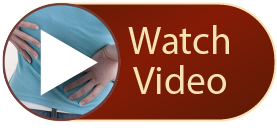
Lower Back Pain (by Ming Jin, PHD, LAC)
Lower Back Pain can be caused by Strain (stretching or tearing of a muscle or a tendon caused by long time sitting, standing, or certain postures); Sciatica (pain radiating along the sciatic nerve, which runs down one or both legs from the lower back); Herniated Disc; Degenerative disc disease (osteoarthritis of the spine of the lower back); Sprain( stretching or tearing of ligaments). Acupuncture has demonstrated efficacy in relieving muscle stiffness and supporting better joint movement as well as aid the healing of swelling and bruising. Points are mainly on the lower back such as UB20, UB23, UB47, UB24 plus distal point on the leg UB40 to work effectively for the lower back pain. Acupressure is employed to ease the pain and relax the muscles by carefully applying for patients with the herniated disc on the lower back area.[Read More...]
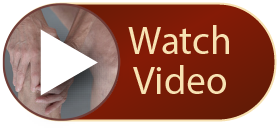
Hip Pain (by Ling Zhang, RN (US), L.Ac.)
Hip Pain is commonly from: Arthritis(Inflammation of one or two hip joints, causing pain and stiffness that can worsen with age); Osteoarthritis (occurs when flexible tissue at the ends of bones wears down); Bursitis (Inflammation of the fluid-filled pads that act as cushions at the hip joints). Acupuncture is an excellent modality to help manage the patient with arthritic hip pain. We usually choose the Arshi points in the gluteal region as well as points of GB30, GB29, BL53 and BL54.[Read More...]
Knee Pain can be caused by: Knee Arthritis (Inflammation of one or two knee joints causing pain and stiffness that can worsen with age); Osteoarthritis; Chondromalacia (damage to the cartilage under the kneecap); Knee Injury (such as a ruptured ligament or torn cartilage). Acupuncture relieves pain, stiffness and improves knee function with additional Tui Na stimulation applied to the acupuncture points of Xi Yan, Heding, SP10, ST34, GB34, SP9, ST36 and LV7etc. [Read More...]
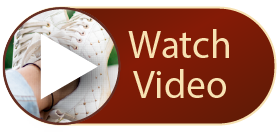
Ankle & Foot (by Ling Zhang, RN (US), L.Ac.)
Achilles Tendinitis causes foot pain when the Achilles tendon is repetitively or intensely strained and inflamed. Achilles tendinitis can weaken the tendon, making it more vulnerable to a rupture - a painful injury that usually requires surgical repair. Studies have shown acupuncture is a valuable treatment solution for Achilles tendinitis. It can strengthen and repair the damage of tendons, regulate anti-inflammatory response, increase circulation surrounding the tendon and tissue. Acupuncture with electric stimulation around the Achilles tendon can ease the pain. Mostly used acupuncture points are BL60, BL61, KD3, and KD4, all these points are local points near the tendon. [Read More...]
Ankle Pain can be caused by different reasons: Ankle joint Osteoarthritis; Ankle joint Arthritis; Tendinitis of ankle joint; Ankle Sprain.
Foot Joint Pain is mostly from: Arthritis; Osteoarthritis; Rheumatoid arthritis and another commonly seen condition called gout (Pain and inflammation occur when too much uric acid crystallizes and deposits in the joints).
Foot Pain can be caused by the herniated disc. If a nerve root in the lower back is irritated or compressed, the pain will radiate along the nerve down to the leg and foot and the patient will experience pain, numbness, tingling or weakness on the leg and the bottom of the foot. Acupuncture and acupressure not only be applied to the foot area but also the back. By targeting specific points along meridians that correspond to the nerve pathways affected by a herniated disc, Acupuncture may result in a healing process by increasing blood flow and reducing inflammation. [Read More...]
Heel Pain usually affects the bottom of the heel or back, which may interfere with normal activity, especially movement, Bone Spurs (osteophytes) may be one of the reasons. Plantar Fasciitis is one of the most common causes of heel pain. It causes tingling, which usually occurs in the first step of the morning. The major complaint of those with plantar fasciitis is pain at the bottom of the heel or at the bottom midfoot area. The pain can be dull or sharp. Some people feel a burning or ache on the bottom of the foot extending outward from the heel.
Local acupuncture at KD3, KD6, UB60, UB62 and GB40 can relieve inflammation and swell for ankle and foot pain. We often choose the acupoints on the head and ear to relieve the pain of heel pain from tendonitis. Because local edema and inflammation are very sensitive in the acute case, it is wise to select the pain-relieving points in the distal reflex area. We will also choose the appropriate herbal medicine for external application or foot soaking, which will help to eliminate edema and pain as soon as possible.
[Read More...]
Soft Tissue Injury & Fibromyalgia (by Ling Zhang, RN (US), L.Ac.)
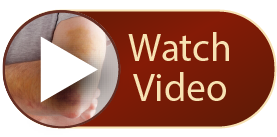
Soft tissue injury
The human body is composed of a complex structure of soft tissues like muscles, ligaments, tendons and disks, and bones, which work together to support the body and enable us to move around. Problems with any of these components can lead to pain. The most common soft tissue damages are from strain, sprain and muscle contusion. Injured muscles, tendons, and ligaments are often occurring during sports and exercise activities.
Strain: Strained muscles or ligaments frequently cause pain. Activities that can lead to strains include lifting something improperly; lifting something that is too heavy; making a sudden and awkward movement.
Sprain: A sprain is a stretch or tear of a ligament. The ligament is a strong band of connective tissue that connects the end of one bone with another bone. It stabilizes and supports the body's joints. The areas of the body that are most vulnerable to sprains are the ankles, knees, and wrists.
Contusions (Bruises): Contusions occur when part of the body was struck by a blunt object, crushing underlying muscle fibers and connective tissue without breaking the skin. It could happen from falling or jamming the body against a hard surface.
Tendinitis: Tendinitis is an inflammation or irritation of a tendon or the covering of a tendon (sheath). It is caused by a series of small stresses that repeatedly aggravate the tendon. Symptoms typically include swelling and pain that worsens with activity. Professional baseball players, swimmers, tennis players, and golfers are easy to get tendinitis in their shoulders and elbows. Basketball players, runners, and aerobic dancers are prone to tendon inflammation in their knees and ankles.
For an acute condition which happens within 24 hours, we would suggest the patient to rest and ice. We usually do acupuncture for the local affected area. Sometimes the patient affected area is very sensitive to the needle, and then we would choose the scalp needle, ear needle or distal needle to help. There is some herbal patch that can be applied to the injury area to improve the inflammation and ease the pain.
If the soft tissue injury is not treated timely and effectively in the acute stage, it may become chronic pain, numbness, swollen or limited joint activity.
We usually need to combine acupuncture, moxibustion, cupping and other therapies for treatment. Experienced massage practitioners will give proper manual therapy according to the specific situation of the injured part. In fact, acupuncture, massage and hot compress are the most common and effective treatments for chronic soft tissue injury.
[Read More...]
Fibromyalgia
Fibromyalgia is a disorder characterized by widespread musculoskeletal pain accompanied by fatigue, sleep, memory and mood issues. The causes of this disease is still not very clear so far but it may be related with genetics, infections and physical or emotional trauma. Patients may feel sore or ache in “Tender points" and some of these patients may have irritable bowel syndrome, migraine, interstitial cystitis or bladder pain syndrome, temporomandibular joint disorder etc.There are four common typical TCM patterns for fibromyalgia, including liver Qi stagnation, Qi and blood deficiency, Qi stagnation & blood stasis and kidney deficiency. Acupuncture, acupressure, cupping therapy and herbal remedy will apply to ease the pain according to TCM diagnosis. Also, address the root causes of the condition by balancing the body’s Yin Yang and Qi Blood. Acupuncture and moxibustion with the selection of appropriate herbal formulas are very effective in improving physical strength to help fatigue symptoms. Moxibustion on the points besides the spine can regulate blood circulation and relieve the pain.[Read More...]
Facial Pain (by Ruoyi Fang, M.S, L.Ac.)
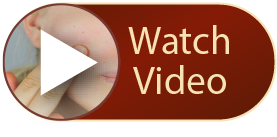
Facial pain is pain happening in any part of the face, including the mouth and eyes. It can originate from a specific area of the face, or it may radiate from another part of the head. The character of pain in the face may be dull, sharp, constant or intermittent and may vary depending on the cause.
Facial pain can be due to anything from an infection to nerve damage in the face.Doctors often categorize facial pain into one of several types including: Neuromuscular and tension pain (Migraine, Tension headache, Cluster headache); Neuralgia (Trigeminal neuralgia, Post-herpetic neuralgia); Temporomandibular pain; Infections (Sinus infection, Salivary gland infection); Dental pain (Abscess tooth, Dental surgery related pain); Post-surgical and post-traumatic face pain.
In Chinese medicine facial pain may be caused from: Invasion by pathogenic wind and cold (the wind and cold attack meridians on the face to cause contracture of them and obstruct the circulation of Qi and blood); Invasion by pathogenic wind-heat (from the pathogenic wind heat or the fire from stagnated liver-Qi) and the heat resulting from improper food intake and accumulation of food lead to the fire of liver and stomach flaring to the face; Stagnation of blood from traumatic injury or emotional derangement of the protracted disease may lead to stagnation of blood in the face.
Healing therapy aims to remove obstruction from channels and collaterals, dispel wind and stop the pain. Applying local acupuncture points can promote the circulation of Qi in the meridians on the face and reduce excess so as to stop the pain. Meanwhile, ear acupuncture points of check, maxilla and forehead can be selected, punctured or embedded with seeds or needles. Acupressure would provide correcting the overall flow of energy in the body and relieving stress. Cupping at local points with short retention of jars can help muscle relaxation and reduce muscle spasms.
[Read More...]
Headache (by Ruoyi Fang, M.S, L.Ac.)
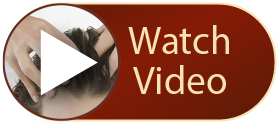
Headache is the most common clinical symptom of pain. It originates from the tissues and structures that surround the skull or the brain. Because the brain itself has no nerves that gives rise to the sensation of pain. The thin layer of tissue that surrounds bones, muscles that encase the skull, sinuses, eyes, and ears, as well as thin tissues (arteries, veins, and nerves) that cover the surface of the brain and spinal cord, all can become inflamed or irritated and cause headache which presents in one or several locations on the head.
A primary headache is due to the headache condition itself and included three types as Migraine, Tension headache and Cluster. It comes from the inflammation of pain-sensitive parts of the body in and around the neck and head, including specific areas of the brain, blood vessels, muscles, nerves. A secondary headache is a headache related with another health condition such as sinus headache, medication overuse headache, meningitis, post-traumatic headache, brain tumor or aneurysm headache, cervicogenic headache etc.
TCM treatment for headache aims to calm the liver, dispel the pathogens and unblock the meridians. The treatment plan should be individualized according to specific disharmony patterns.
Herbs formula Headex/TT, leads the liver yang to flow downward, regulates the qi, and disperses blood stasis, harmonizes the organs, and reestablishes a balance of Yin and Yang. Acupuncture stimulates the nerves to release hormones, such as endorphins, that trigger a healing response to your body. Also, a gentle head massage accompanied with acupuncture can help release muscle tension and promote blood circulation, reducing the levels of anxiety and stress.
[Read More...]
Osteoarthritis (by Ruoyi Fang, M.S, L.Ac.)
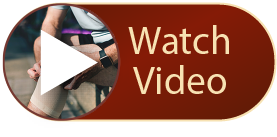
Osteoarthritis is the progressive breakdown of cartilage in joints wherein the bones begin to rub against each other thus causing damage to tissues and creating pain in the joints. The most commonly affected areas are the joints of the fingers, hips, knees, feet, or spine.
Symptoms of this condition include pain in the hands, knees, hips, feet, or spine, stiffness after inactivity, limited range of motion, occasional swelling, or deformity of the joints. It is a disease of gradual onset, and thus, symptoms may not be obvious for years, until well after bones and tissues have suffered significant damage. Symptoms range from mild to severe depending on the joints involved.
In traditional Chinese medicine, the symptoms related to osteoarthritis are called "Bi syndrome" (pain obstruction syndrome), generally caused by external wind, cold, or dampness with basic deficiency patterns, and Qi, Blood stagnation in the meridians. Based on these factors, it divides into four subcategories:
- Xing Bi (wind/wandering arthralgia) - affected by excessive wind, pain without a fixed location.
- Tong Bi (cold/painful arthralgia) - severe localized pain may worsen with exposure to cold.
- Zhuo Bi (damp/fixed arthralgia) - soreness and fixed pain in the joints with swelling and heaviness, increase with rainy weather.
- Re Bi (heat arthralgia) - pain, redness, swelling, and a burning sensation in the joints.
Acupuncture and Moxibustion is an effective therapy for osteoarthritis in Traditional Chinese Medicine (TCM). Acupressure is also recommended for patients who have swollen joints, inflamed muscles or tendons, and stiffness and immobility of the joints. The Herb formula Painex/ST is often used for relieving inflammation and easing pain related to osteoarthritis. Vitality/ JGB is designed to strengthen bone and muscle and improve tendon flexibility. It is often used for nourishing the blood and boosting qi to relieve pain, ache, weakness, stiffness or numbness in the muscle, bone, tendon, or joint.
Preventative care includes maintaining healthy and appropriate body weight, protecting the joints from serious or repeated minor injuries (in order to safeguard the cartilage), and exercise, as light to moderate physical activity can reduce the risk of pain and stiffness. [Read More...]
Scoliosis & Herniated Disc (by Ling Zhang, RN (US), L.Ac.)
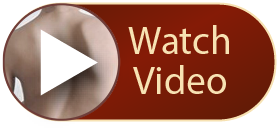
Scoliosis
Scoliosis is diagnosed when there is a curvature of the spine from side to side that is greater than 10 degrees. It occurs mostly in the thoracic or lumbar regions. There are two types of scoliosis. One type is nonstructural scoliosis, which is reversible, while the other, structural scoliosis is irreversible.Children do not usually experience any symptoms associated with scoliosis. Abnormal growth of the spine may be detectable upon physical exam. Early signs include a shoulder or hip appearing higher than the other, a shoulder blade protruding, a rib higher on one side, or a waistline flatter on one side. Adults may suffer from back pain or difficulty in breathing.
Scoliosis is more serious in children because of its potential to worsen during periods of growth. If the skeleton is less mature, then there is a possibility of the curve worsening. If the curve is larger, there will be a greater risk of worsening. Most cases of scoliosis are mild. However, in severe forms, braces and surgery may be required.
We attach great importance to the prevention and protection of scoliosis in children, especially those carrying heavy school bags or using improper writing posture. Preventive care items include: acupoint pressing and gentle massage that help to relax the back muscles, and with proper exercise, purposefully adjust the muscle tension on both sides of the spine. Sometimes we also prescribe herbs to help increase bone density and relax muscles. We highly recommend that children from primary school to high school come to the clinic once a month for back chiropractic acupressure therapy, especially for those who actively participate in dance, gymnastics, skating, weight-bearing training or aerobic exercise because this maintenance therapy plan can help them prevent from injury and strengthen the ability of bone and muscle.
Adult scoliosis treatment focuses on relaxation and spinal adjustment. Generally, early stage scoliosis can be reversed by regular monthly care. For those who have suffered from scoliosis over a long period of time, Acupuncture can help alleviate pain and effectively relax the muscles to provide some relief of symptoms.[Read More...]
Herniated Disc
A disc herniation occurs when a disc, which normally acts as a sort of shock absorber for the spinal vertebrae, bulges or ruptures. When a disc suffers from an injury, normal wear and tear or disease, it may rupture. The area most susceptible to disc herniation is the lower back or lumbar region.Herniated discs can be caused by the natural aging process, disc disease or injury to the spine. As a person ages, the nucleus of the disc contains less fluid and thus becomes more easily injured. Injury to the spine can occur from sudden pressure to the lumbar region, repetitive physical injuries such as from heavy lifting or a sports-related injury. Some risk factors for a herniated disc are age, history of back injury, and physical activity or a work environment that includes long periods of sitting, driving, heavy exertion, or frequent bending.
Depending on the size and location of the disc, the symptom varies:
- No symptoms at all - location of herniation not impacting a nerve
- Pain or numbness in shoulders, arms, or chest - location of herniation in the neck region
- Leg pain, weakness and tingling in one leg - location of herniation in the lower back region
- Severe symptoms may be loss of agility, strength or sensation in the legs
- Unrelenting pain may, over the long term, lead to the onset of anxiety or depression
The patients suffering from the herniated disc are normally suggested to go to the western doctor first to get the diagnosis by proper examination and prescribe the therapy according to the cause of their problem. If the pain is very bad, the doctor might give the patients steroid shots and pain medication first then refer the patients to physiotherapy, chiropractor or acupuncture.
The Acupuncture therapy program for herniated discs in our clinic includes both Acupuncture and Acupressure. Patients are suggested to bring the report of x-ray or MRI to the office to help the practitioner determine the location of the disc injury. Acupuncture with electrical stimulation is very effective in relieving swelling and inflammation around the disc area. It can also ease the muscle spasm and radiating pain from herniated discs. According to the location of disc herniation, the time of occurrence, and whether other therapies are used at the same time during acupuncture, we will decide how to use the appropriate Tui Na manipulation. If needed sometimes we also give patients some herb to take to ease pain and reduce inflammation to promote fast recovery.
Patients are suggested to prevent the condition to reoccur by maintaining a healthy and appropriate body weight, exercising regularly and maintaining good posture.
[Read More...]
